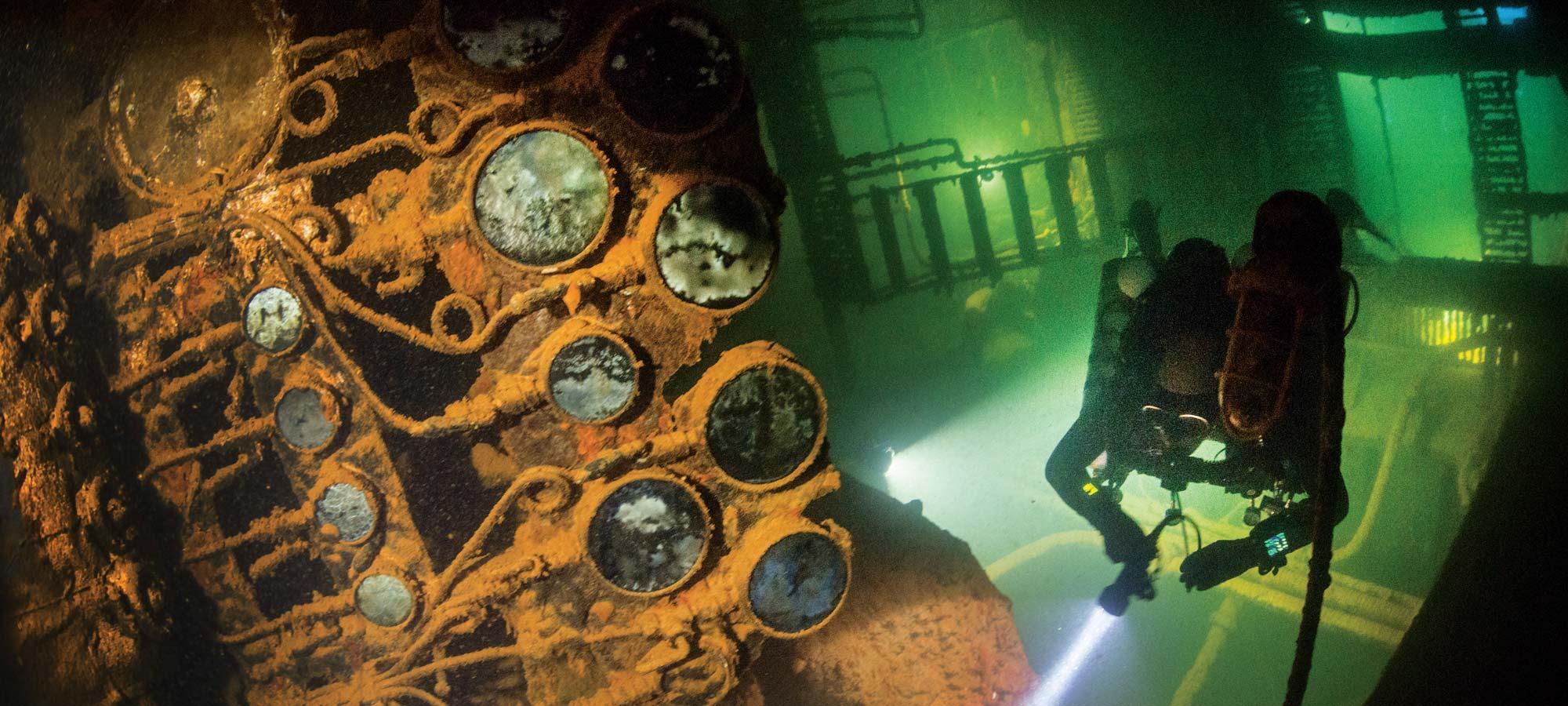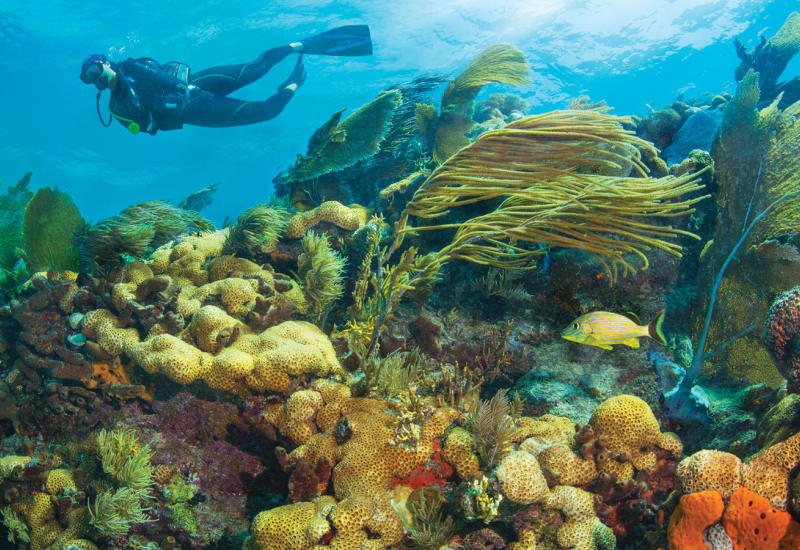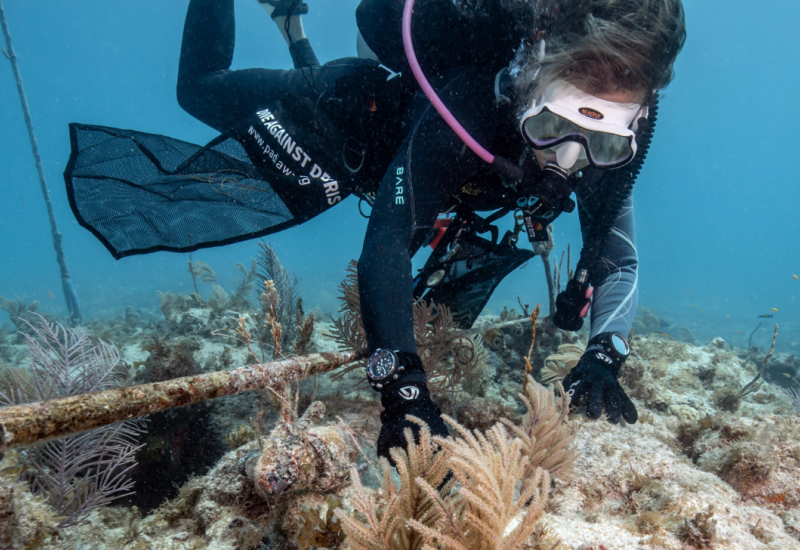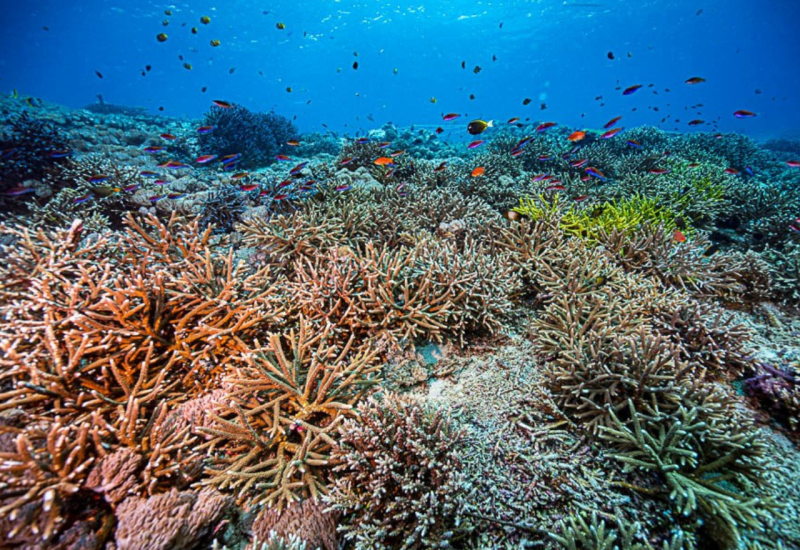Fighting to Protect the Wrecks of Truk Lagoon
In May 2018, we received an unexpected email. “G’day,” it began. “Read your article in Scuba Diving, and we would love to help you save the shipwrecks in Truk Lagoon. We have just bought a vessel, picture attached, and you can have it for free.” The pointer of our mouse hovered over the attached image, hesitating in case of a hoax. Curiosity got the better of us, and…click.
Before us was a photo of a diving support vessel decked out in Royal New Zealand navy colors. Its name, the HMNZS Manawanui, was proudly displayed on the stern—in the Māori language, manawanui means “big heart.” The vessel came with a diving bell, underwater welding and air diving capabilities, a decompression chamber and a 15-ton crane.
We stared in disbelief. A stranger had just offered us the perfect vessel. Could our dreams be coming true?
A Problem with No Solution
In 2015, we dived the Truk Lagoon shipwrecks, conducting corrosion measurements for the Museum of Western Australia. Our findings were depressing. The shallower wrecks are deteriorating rapidly. The risk of losing these World War II monuments, and potentially disastrous pollution of the lagoon from the release of oil trapped in the wrecks, is very real.
The threat of trapped oil in shipwrecks is a global issue. The National Oceanic and Atmospheric Administration is monitoring the threat; the Secretariat of the Pacific Regional Environment Programme has established a World War II shipwreck database; Europe has carried out the Development of European Guidelines for Potentially Polluting Shipwrecks; and international conferences have been held on the topic.
We contributed to a German documentary, The Black Tears of the Sea, and told the story of Dr. Ian MacLeod, maritime archaeologist and shipwreck conservator, in our own documentary, The Wreck Man. We wrote about the problem in Scuba Diving. We repeated the story to anyone who would listen. We were hopeful but never imagined we would get a chance to do something about it.
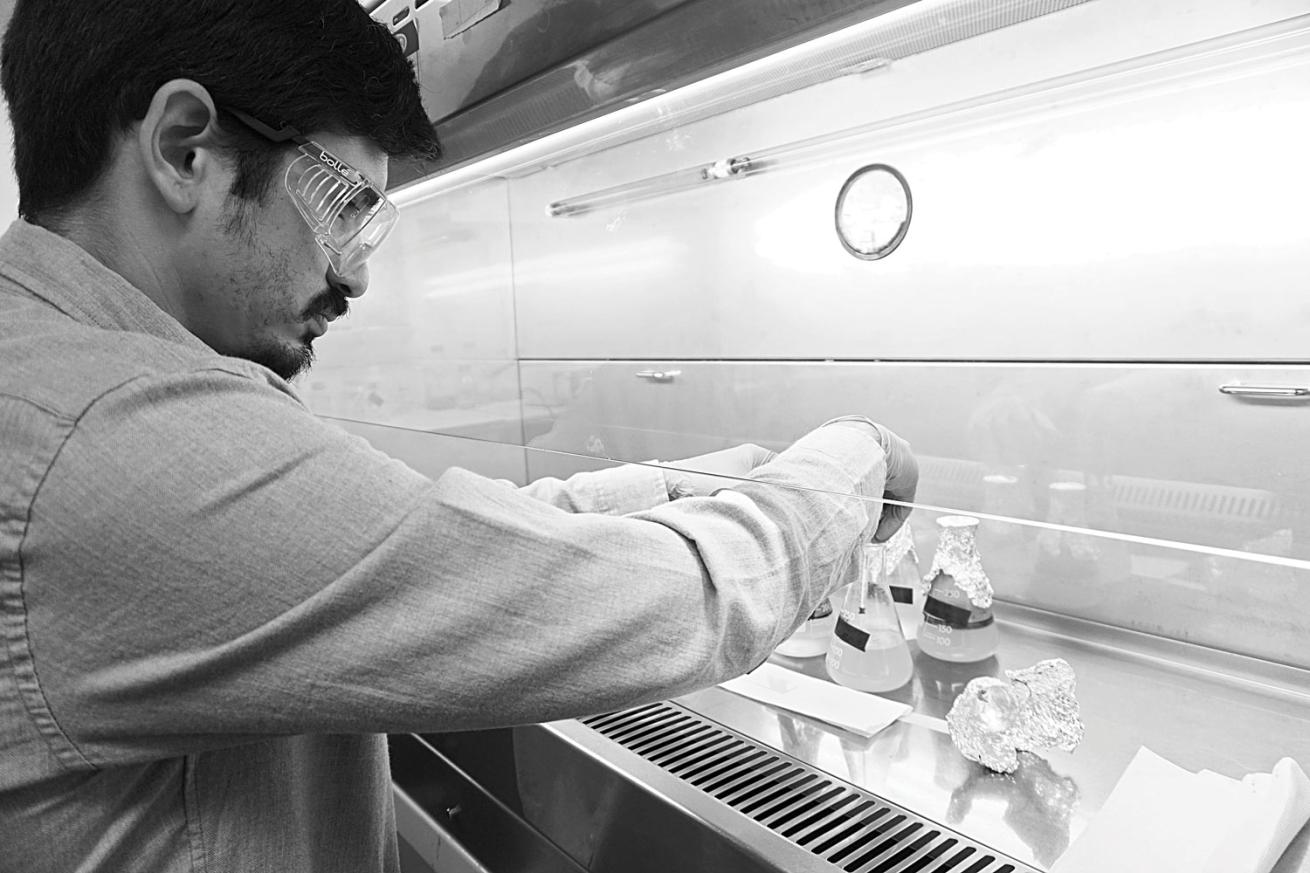
Chris SelmanJose Loureiro analyzes samples at Curtin University in Perth, Australia.
We’re Going to Need a Bigger Boat
In the months after that email, we became acquainted with Paul and Wilma Adams, the vessel’s owners. Passionate divers, they had been touched by the beauty of the islands of Chuuk and its people and the significance of the shipwrecks, and were equally worried about the oil that can still be seen bubbling out of some wrecks. They resolved to do something about it.
By chance, Paul found the perfect vessel, being decommissioned by the New Zealand navy. He submitted a proposal and in July 2018 took ownership. A crew was commandeered to sail the vessel to Australia, braving a 1,328-mile voyage. After a spell in dry dock, the vessel emerged with a new name: Ocean Recovery.
A Foundation for the Future
To support Ocean Recovery and enable its research, conservation and environmental-protection missions, Paul and Wilma established the nonprofit Major Projects Foundation in October 2018.
As word of the foundation spread, a volunteer team banded around the Adamses. Peter Morris, foundation coordinator, brings a wealth of NGO experience. Maritime archaeologists MacLeod and Matt Carter provide guidance on history and preservation. Dr. Bill Jeffery of the University of Guam provides cultural and in-country support. Paul MacDonald and Chris Purkiss, mechanical and mining engineers, service and maintain the vessel. Pat Miller is the foundation’s media and marketing guru. We contribute our experience as corrosion engineers in the offshore oil and gas industry to head up the subsea engineering team.
We have a foundation, a crew and a capable vessel. The question is, what are we going to do with them?
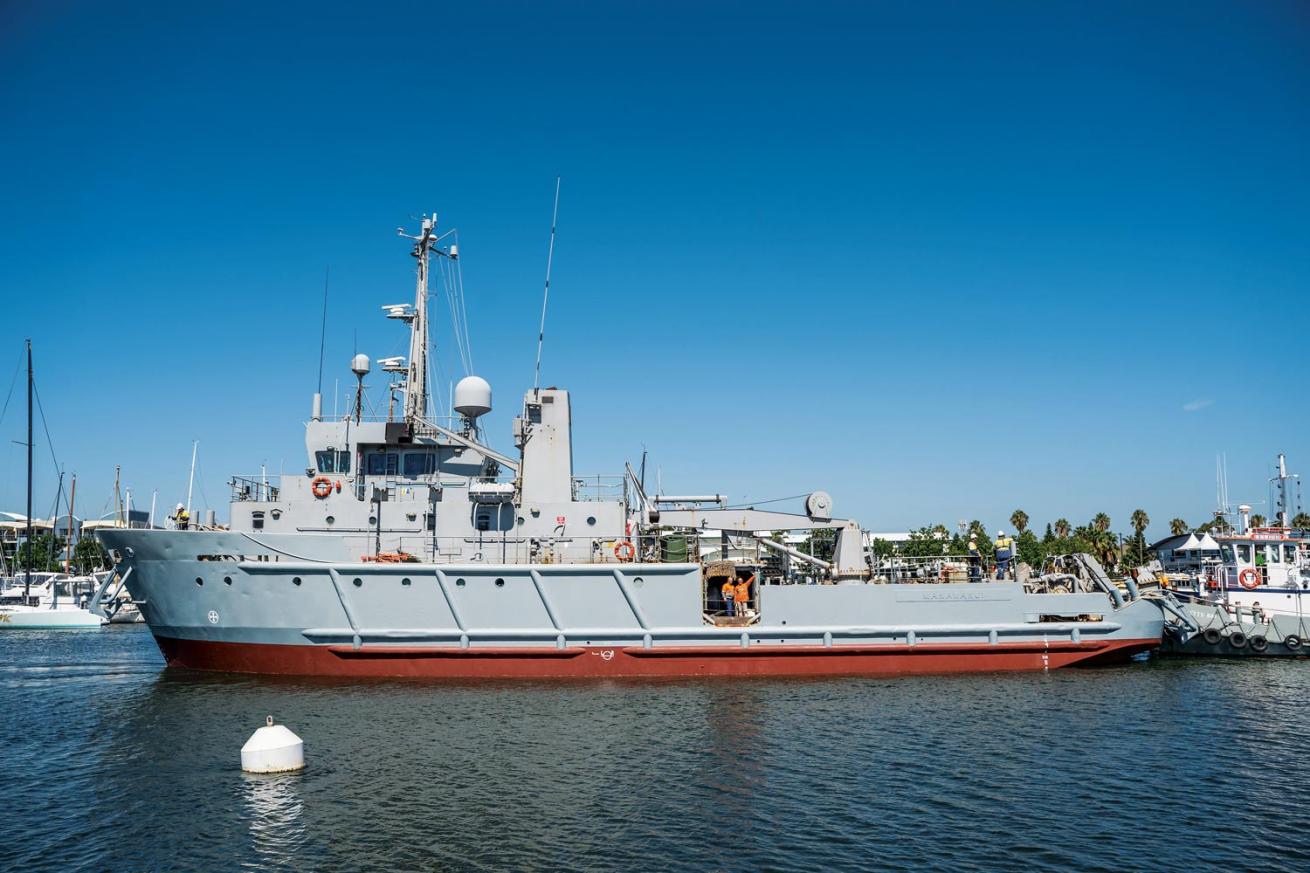
Dave Hukka, Major Projects FoundationOcean Recovery
Finding the Oil
It’s difficult to confirm whether there is oil in a historic shipwreck, to quantify the volume of that oil and to determine the risk to the environment.
The first challenge is identifying which wrecks contain dangerous quantities of oil —records for vessels sunk in WWII are less than precise. Conclusions can be drawn from historic descriptions such as “the vessel burned for days” or reports of spills after a battle, which suggest that the oil has burned off or been dispersed and likely does not remain in the shipwreck.
One option for screening large areas—an option Major Projects Foundation is pursuing—is using sensors mounted on autonomous underwater vehicles to “sniff” the water for elevated concentrations of oil, a method commonly used in the oil and gas industry.
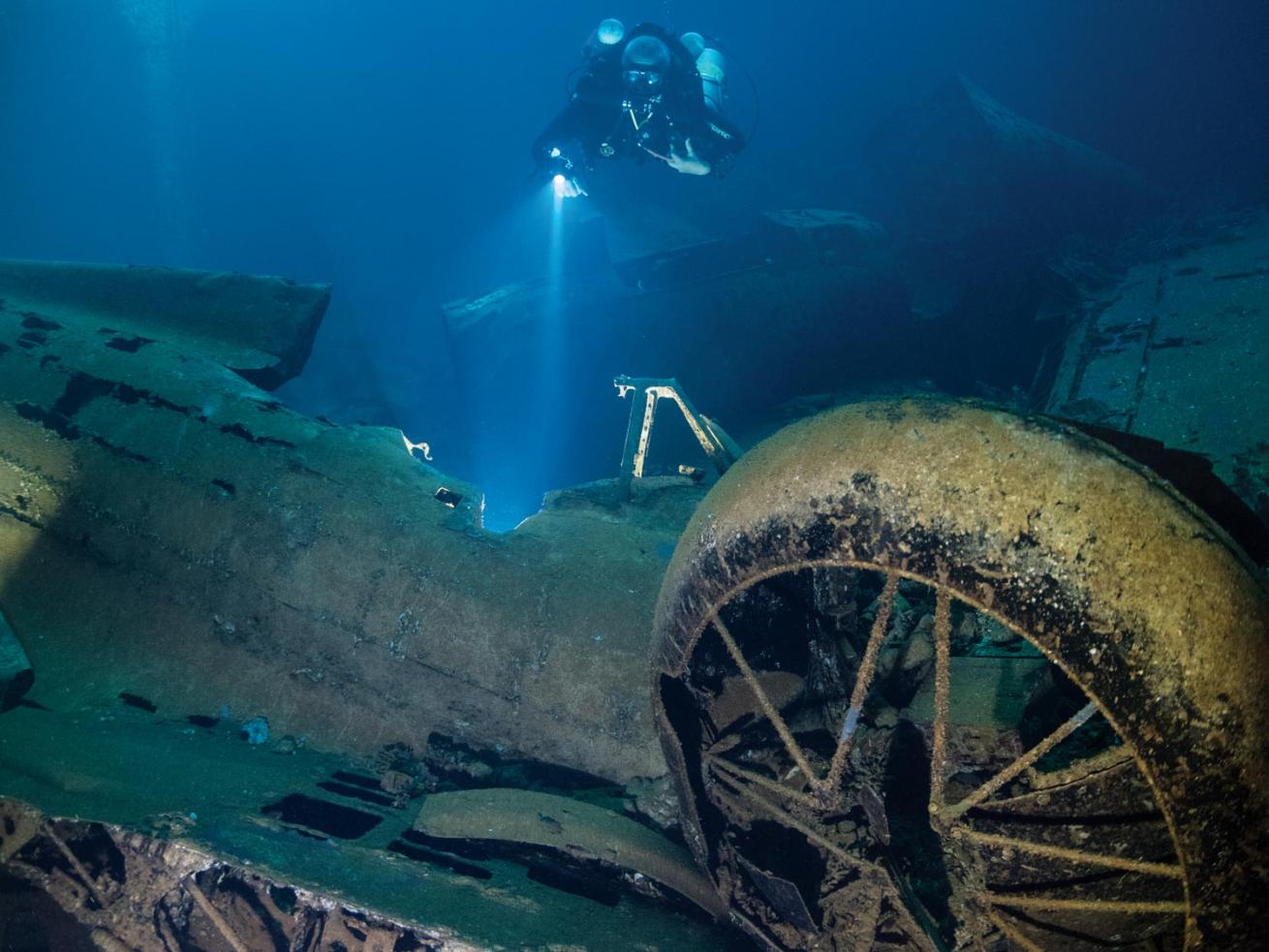
Pete MesleyOnly the hull of Fujikawa Maru might be preservable.
How Much Oil?
Once a wreck is suspected to contain oil, the question becomes: “How much?”
Salvage companies apply a hot-tap method, drilling into a tank at multiple locations to take samples from different heights, to find the oil level. This method was recently used to locate and recover oil from the SS Manolis in Newfoundland and the Prinz Eugen in the Marshall Islands.
It is complex, costly and risky at best; with corroded WWII tanks, there is a risk of cracking open the tank unless the integrity of its wall can be confirmed prior to drilling.
A subtler technique is neutron backscatter. A beam of neutrons is directed into a tank; neutrons bounce back at a rate proportional to the density of material in the tank. A receiving device measures the changes so levels can be defined.
This method was used successfully to survey the SS Montebello in California in 2012, but it is technically challenging to execute.
Given the challenges with existing techniques, Major Projects Foundation is actively seeking ways to develop a nondestructive testing method that can be applied to any shipwreck.
An International Effort
The issue of oil in shipwrecks is bubbling to the surface in many countries. In Truk Lagoon, the Japan Mine Action Service, via a team of divers headed by Kiyoshi Inoue, is taking action. JMAS is a nongovernmental organization established by volunteer Japanese veterans with a mission to address lingering war-related threats to civilians. Their work originally focused on removing land mines; JMAS recently expanded to Micronesia, where the group has a three-year plan to remove unexploded WWII ordnance from Palau, and oil from the Truk Lagoon shipwrecks.
JMAS volunteers remove oil by soaking it up by hand with absorbent material contained in plastic bags and carried to the surface by divers. Where large volumes are found, hand pumps are used. This approach is slow and limited to areas accessible to divers, but is making a positive impact on immediate threats from oil in the wrecks, and making them safer for divers. JMAS has sent Major Projects Foundation samples recovered from various wrecks for analysis and to further research on bioremediation options.
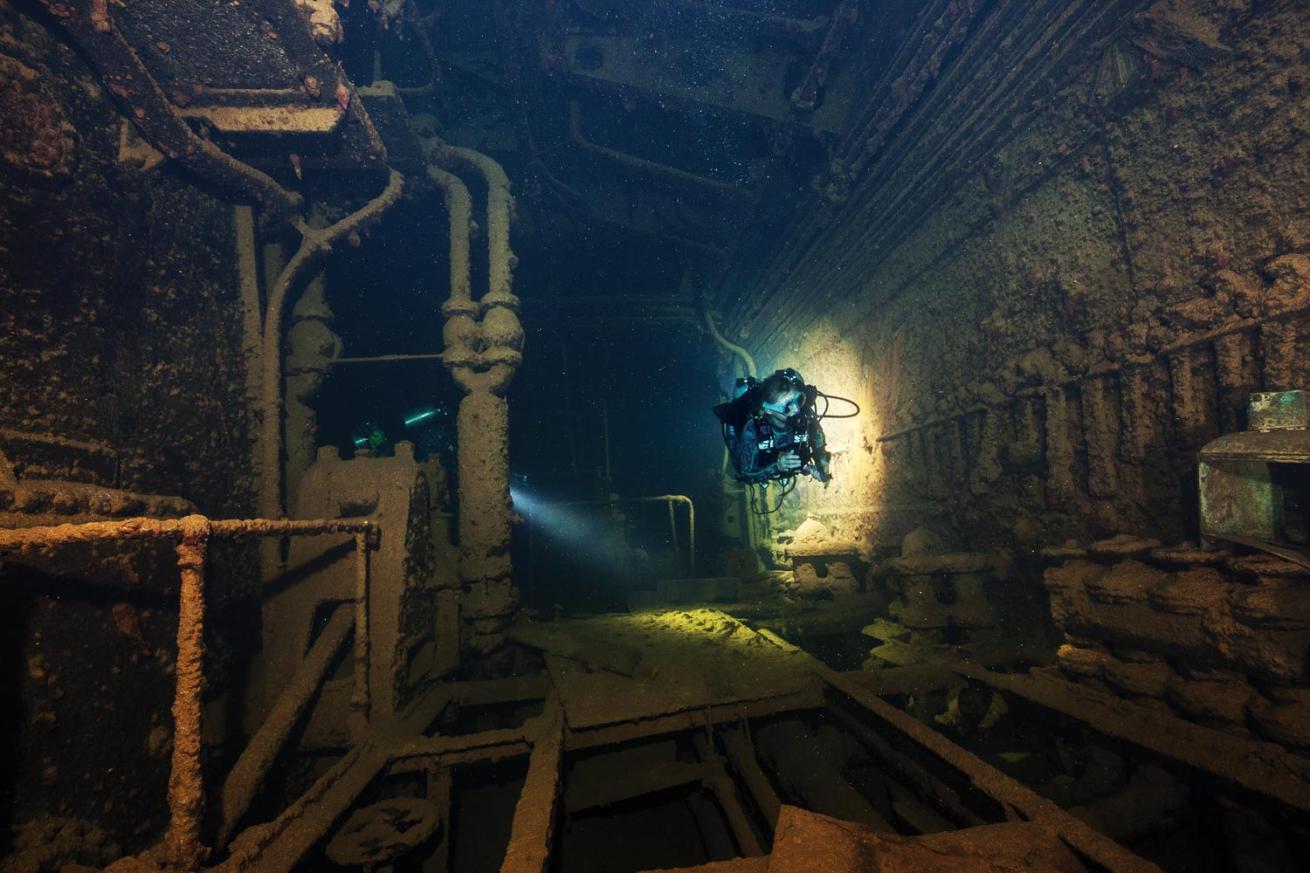
Liz RogersShallower wrecks like Kensho Maru are at greater risk.
Harnessing Nature: Bioremediation
There might be a slower but more gentle method to remove the oil: It can be consumed by naturally occurring bacteria. Initial testing on a Shinkoku Maru oil sample recovered in 2015 indicated that bacteria were present and had reduced the amounts of the heavier, more dangerous oils in the sample. Similar tests on other shipwrecks by JMAS confirmed this finding.
Over the past year, research has been underway at Curtin University in Perth, Australia, by Jose Roberto Loureiro under the supervision of Dr. Laura Machuca Suarez, an expert on microbiology.
The research determined that specialized strains of naturally occurring Pseudomonas sp. bacteria were present in the recovered samples and were able to break down the hydrocarbon chains into water and carbon dioxide. With the correct conditions and nutrients, these bacteria were extremely efficient at breaking down the oil—sometimes too efficient. In initial tests, bacteria ate the oil so fast that the resulting gas blew the seals off the bioreactors. Later tests had to dilute the bacteria to keep them to a measurable rate, but this certainly proved the potential. The challenge is how well we can re-create those conditions inside a wreck.
Another interesting finding was that the bacteria preferred the oil from its source wreck, eating it faster, showing that evolution and specialization had already occurred. It’s hypothesized that the bacteria would adapt to a new environment in time, and consumption rates would eventually be similar. Bioremediation would be cheaper and less risky than a direct removal by hot tapping, but there are several years of research to be done before this technique can be applied in the field.
The major challenge for bioremediation is time; regardless of how active or hungry the bacteria is, bio-remediating a large oil deposit can take many years, and as we have already discovered, the clock is ticking on the stability of these wrecks.
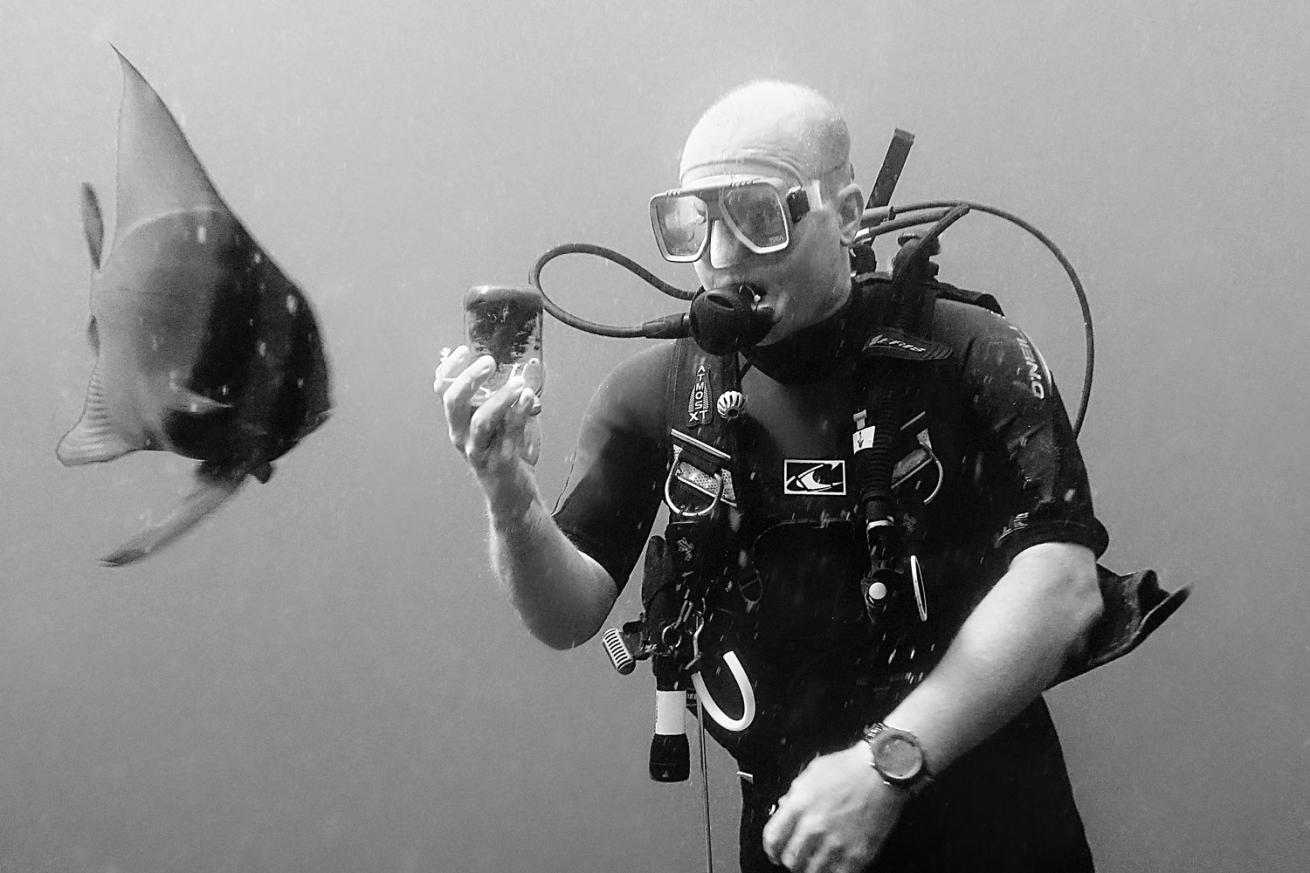
Allison SelmanChris Selman in 2015 with a sample from Shinkoku Maru.
Freezing Time
One option is to freeze time and halt further degradation of the shipwrecks until the bacteria have done their work or oil recovery can be performed. Our previous Scuba Diving article described how cathodic protection can be applied to stop corrosion of a shipwreck to halt further degradation until the bacteria have broken down the oil or direct oil recovery can be performed.
With Ocean Recovery, we have a vessel capable of installing the cathodic protection needed to stabilize these wrecks. Mock trials are planned for August, to simulate installation of a cathodic protection system using Ocean Recovery on a noncritical shipwreck in Australia.
Where Next?
The foundation is actively engaging with volunteer, community, academic, government, and nongovernment organizations in collecting and sharing information to develop intervention priorities throughout the Pacific region.
In the next few years, the foundation intends to further bioremediation research work to develop a system that can be deployed, develop a diver-deployable oil detection sensor, and successfully complete the cathodic protection simulation trials. Once the foundation has practiced and perfected installation of a cathodic protection system, work on historic wrecks will commence.
We have the vessel. We have the team. We have the will, and we have the technology. All we need now is your support.

